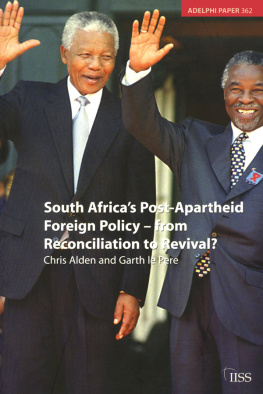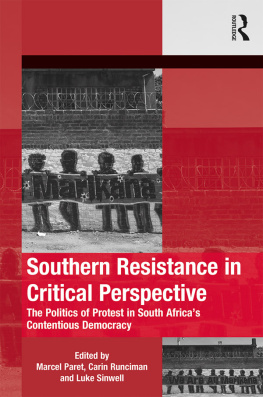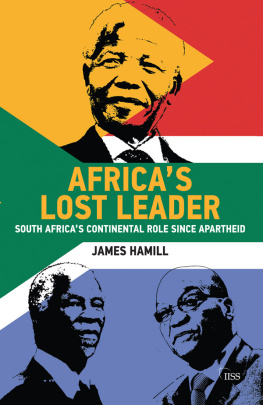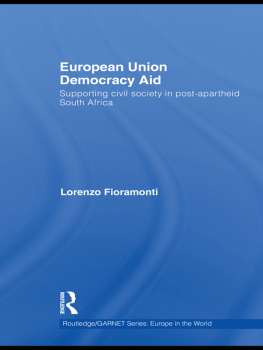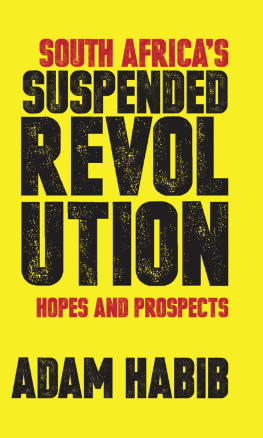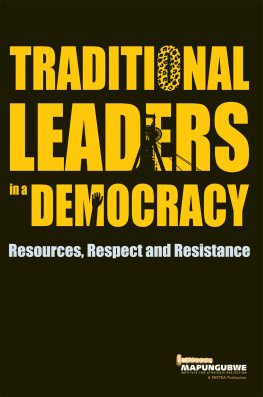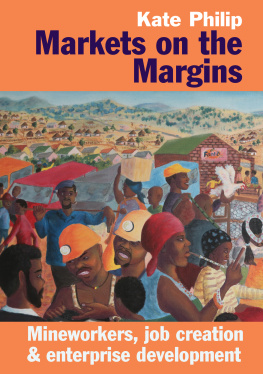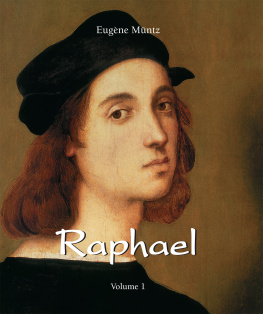Published in South Africa by:
Wits University Press
1 Jan Smuts Avenue
Johannesburg, 2001
www.witspress.co.za
Copyright Raphal Botiveau 2017
Published edition Wits University Press 2017
Map redrawn by Janet Alexander
First published 2017
978-1-77614-204-0 (print)
978-1-77614-206-4 (EPUB)
978-1-77614-205-7 (PDF)
All rights reserved. No part of this publication may be reproduced, stored in a retrieval system, or transmitted in any form or by any means, electronic, mechanical, photocopying, recording or otherwise, without the written permission of the publisher, except in accordance with the provisions of the Copyright Act, Act 98 of 1978.
All images remain the property of the copyright holders. The publishers gratefully acknowledge the publishers, institutions and individuals referenced in captions for the use of images. Every effort has been made to locate the original copyright holders of the images reproduced here; please contact Wits University Press in case of any omissions or errors.
This book was published with the support of the Institut des mondes africains (CNRS/IRD/EHESS/EPHE/Universit Paris 1 Panthon-Sorbonne/Universit Aix-Marseille) and the French Institute of South Africa-Research (IFAS-Recherche). IFAS-Recherche was founded in 1995 in Johannesburg. Under the authority of the French ministry of foreign affairs and the CNRS (French National Centre for Scientific Research), it promotes research in the humanities and social sciences about southern Africa and within this framework supports scientific cooperation.
Project manager: Inga Norenius
Copy editor: Inga Norenius
Proofreader: Lisa Compton
Indexer: Tessa Botha
Cover design: Fire and Lion
I f I were to pick only one word to describe the National Union of Mineworkers (NUM), one that I have heard many times in its ranks, it would be the word humbling, since my experience of the organisation has been a humbling one. Although many members brought an individual contribution to this research, I wish to thank them as part of the formidable collective of men and women that they have been building over the years. Organisation and political involvement certainly have their ups and downs but their contribution to the struggle for South Africas liberation is immense. I hope they will appreciate this book and, although I have tried my best to portray their union in their own words, I also hope they will forgive mistakes and inaccuracies that are likely to have slipped into this manuscript.
I also thank all those outside NUM, working in the labour movement, in civil society, in labour mediation or in mining, who agreed to talk to me and whose contribution to this work was crucial.
The research presented in this book was first released as part of a doctoral dissertation in political sociology (Universit Paris 1 Panthon-Sorbonne La Sapienza Universit di Roma). For their support and complementarity, I wish to thank my two supervisors, Richard Bangas with whom I have had the pleasure to work since 2005 and Claudio Pellegrini.
I am grateful to the French Institute of South Africa (IFAS, Johannesburg) for its superlative support, as well as the Institut des mondes africains (IMAF, Paris) which sponsored my research.
There are many other people that I must thank individually for their direct input into this work. I thank, in South Africa and the USA: Franco Barchiesi, Claire Bnit-Gbaffou, Andries Bezuidenhout, Luli Callinicos, Rudi Dicks, Kally Forrest, Dunbar Moodie, Noor Nieftagodien, Paul Stewart and Lucien van der Walt. In France, Italy and England, I wish to thank Alexander Beresford, Franoise Blum, Fadime Deli, Judith Hayem, Miles Larmer, Daniel Leblanc, Roger Meunier, Clarence Paul, Adriana Piga, Michel Pigenet, Fabrizio Pirro, Enrico Pugliese, Marie-Emmanuelle Pommerolle, Anna-Maria Romani, Johanna Simant, Ian Simms and Isabelle Sommier.
Last but not least, I wish to thank the two reviewers who read my manuscript for Wits University Press, as well as Inga Norenius, who patiently and competently edited this book.


